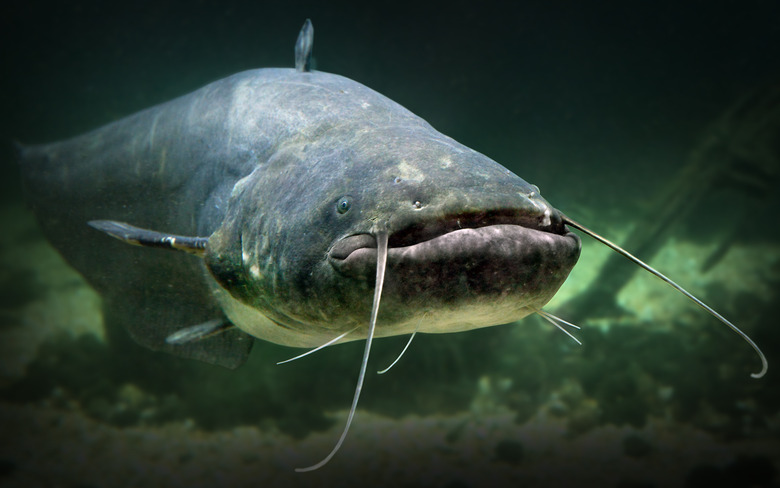The Difference Between Catfish & Tilapia
Catfish and Tilapia–the common name for several species of Cichlid–are household names for many people, particularly those who own pet fish. Most home aquariums contain at least one type of Catfish (usually a gentle-natured Plecostomus), while Cichlid are popular breeding fish and include Angelfish, Dwarf Cichlids, Discus and the ferocious Oscar. Catfish and Tilapia are quite clearly non-related but their appearance is only one of many fundamental differences between them.
Physical Characteristics
Physical Characteristics
It would be impossible to confuse the scaleless Catfish with a Tilapia. The cylindrically shaped Catfish has whisker-like barbels (hence its common name) and a flattened underbelly which is anatomically significant as it is in most cases a bottom-feeder. Most Catfish have small eyes and a mouth which is suited to sucking. The Tilapia, on the other hand, has a deep body with a long dorsal fin and proportional features. Unlike the Catfish, the Tilapia has no distinctly unusual physical characteristics.
Reproduction
Reproduction
As a cavity nester, a male Catfish will seek out a dark, hidden area to clean before spawning with a female. After the eggs are laid, the male chases off the female and guards its nest to ensure the fry hatch safely. Even then it doesn't leave, waiting until the last of its offspring have left, which usually takes a few days. The Tilapia reproduces differently: the male digs a nest at the bottom of a pond or river and mates with several females. Once they've spawned, the male fertilizes the eggs, which are then incubated in the female's mouth until they hatch.
Classification
Classification
Catfish belong to the order Siluriformes and to the super-order Ostariophysi, which is characterized by the presence in most of its members of a swim bladder, which helps the Catfish maintain its buoyancy. Tilapia, on the other hand, belongs to the Cichlidae family of the Perciformes (meaning Perch-like) order, which is characterized by the spiny dorsal fin so characteristic of Tilapia.
Habitat and Range
Habitat and Range
The Tilapia is native to Africa although it's now the second-most widely farmed freshwater fish in the world, after Carp. It can't tolerate cold water which has proved a serious problem for commercial culture. However, this has also prevented it from becoming too invasive beyond its natural habitat. In comparison, the Catfish has made every continent its home at some point except possibly Antarctica, and it can tolerate much cooler water than the Tilapia. It also has more potential than the Tilapia of becoming an alien pest, one example being in the freshwaters of Florida.
Cite This Article
MLA
Peta, David. "The Difference Between Catfish & Tilapia" sciencing.com, https://www.sciencing.com/difference-between-catfish-tilapia-8293317/. 13 March 2018.
APA
Peta, David. (2018, March 13). The Difference Between Catfish & Tilapia. sciencing.com. Retrieved from https://www.sciencing.com/difference-between-catfish-tilapia-8293317/
Chicago
Peta, David. The Difference Between Catfish & Tilapia last modified March 24, 2022. https://www.sciencing.com/difference-between-catfish-tilapia-8293317/
